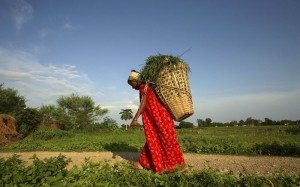Living in extreme poverty affects everybody and everything in their lives. It is not only a lack of money, but also an absence of choice and opportunity. Poverty and deprivation in childhood leaves longterm damage in wellbeing:
- Nepali children are malnutritioned. They rarely eat meat – maybe only once a year – and often go to bed hungry. Women also don’t get enough nutrition during pregnancy, leaving babies born stunted.
- Clean water is difficult to find and sanitation is inadequate, leading to health problems such as diarrhoea.
- Shelter is poor quality, leading to health problems such as malaria and tuberculosis.
- Health clinics are few and far away. If you do reach them, they are often empty, with a shortage of drugs, trained doctors, or health workers.
Healthcare
 The provision of healthcare facilities in Nepal is almost non-existent. Indeed, in the area that we work covering 30 schools there is only one small clinic – a walk from home of up to one day for many.
The provision of healthcare facilities in Nepal is almost non-existent. Indeed, in the area that we work covering 30 schools there is only one small clinic – a walk from home of up to one day for many.
One of the worst outcomes of the extreme poverty in Nepal is the effect on health, particularly of the most vulnerable women, children, and the disabled.
Access to a nurse, doctor, or health assistant in the mountains where there are no roads is usually impossible for the most disadvantaged and at-risk. Even if they reach the help, it is often under-funded, lacking in drugs and facilities, and staffed with poorly trained and motivated employees.
With drugs at prices unaffordable to most Nepalese, who on average earn less than a dollar a day, the World Health Organisation has produced the following statistics:
| Health statistics in Nepal | |
| Women who have accessed healthcare during pregnancy | 1 in 4 (28%) |
| Women who have a trained assistant during birth | 1 in 10 (11%) |
| Women who die during child birth | 1 in 24 |
| Children who are very underweight | Half (48%) |
| Children who are stunted | Half (51%) |
| Children with suspected pneumonia | 1 in 4 (23%) |
| Children with diarrhoea | Half (43%) |
| People using improved water | 9 in 10 (90%) |
| People using adequate sanitation | 1 in 3 (35%) |
The above figures illustrate the size of the health problem in Nepal. The following table compares the UK and Nepal in terms of the income and outcomes:
| Indicator | Nepal | UK |
| Population (in millions) | 27 | 59 |
| Income per person (GDP) | $1,277 | $31,308 |
| Amount spent on healthcare per person | $64 | $2,389 |
| Proportion of money spent of health by the government | 5.3% | 8% |
| Male life expectancy | 61 | 76 |
| Female life expectancy | 61 | 81 |
| Under-5 mortality rate (per thousand population) | 77 | 5 |





